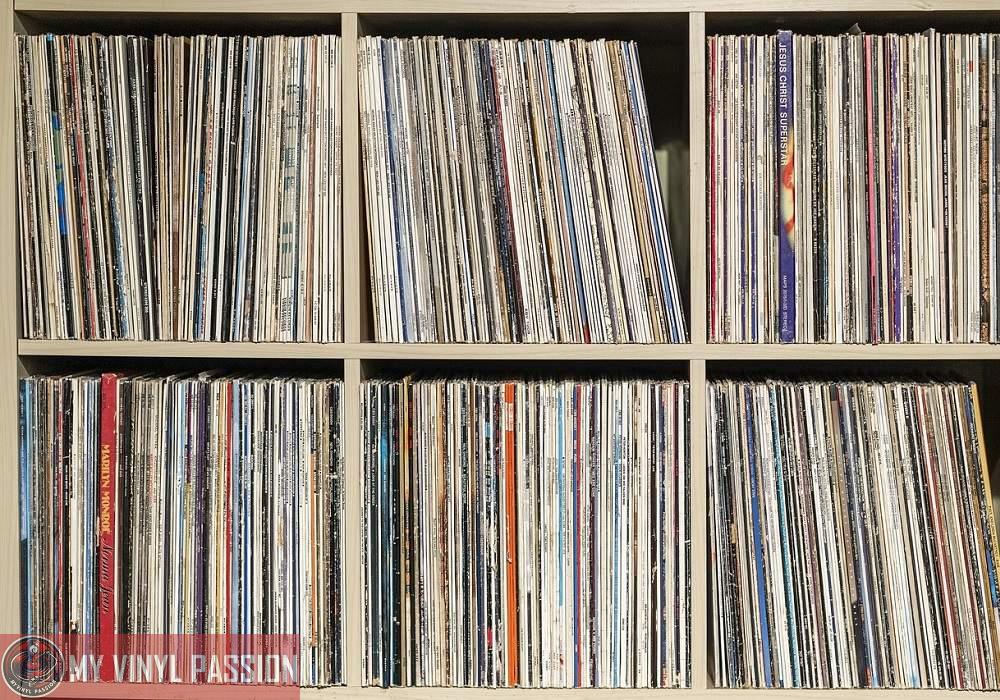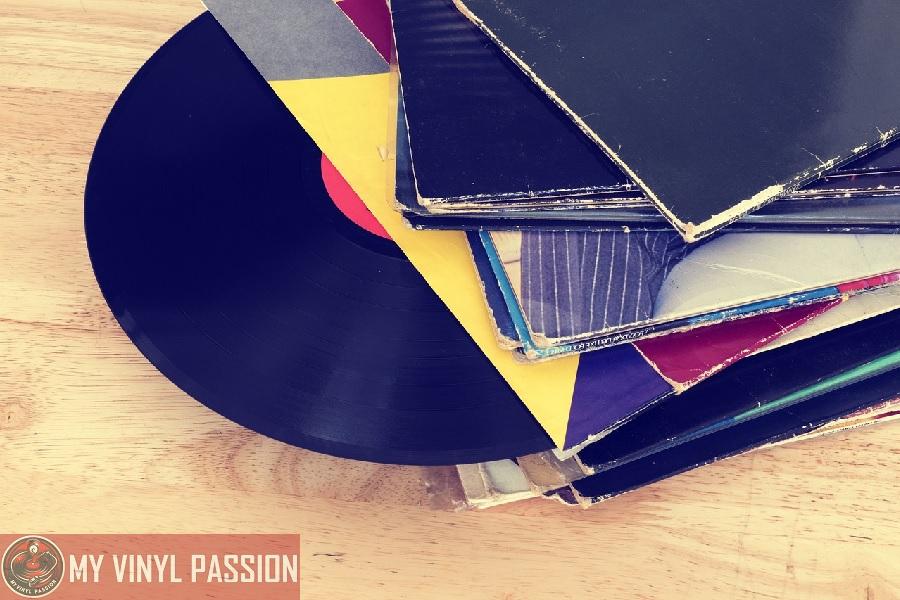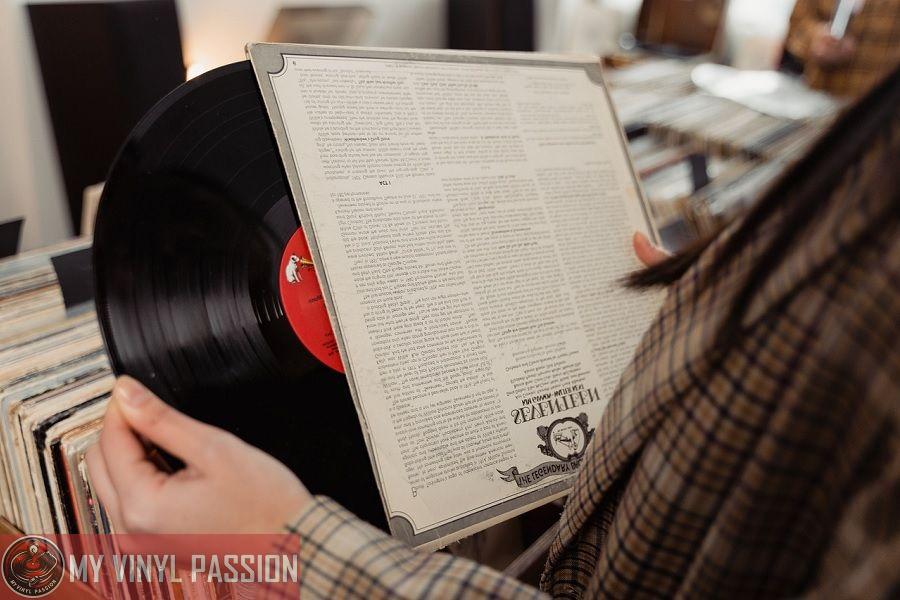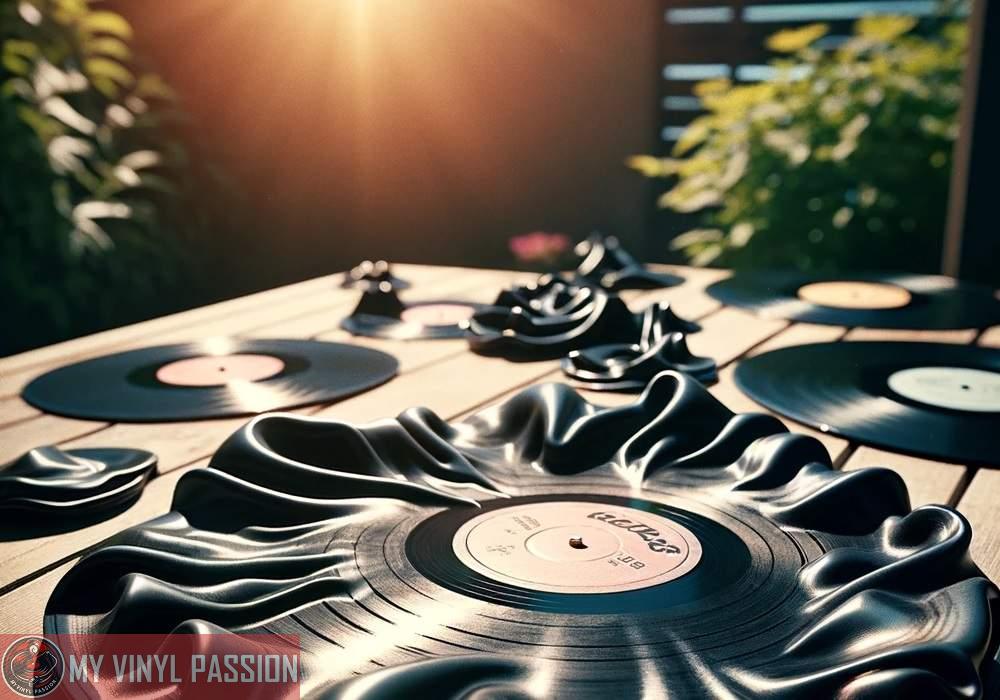Vinyl record storage is both an art and a science, crucial for preserving the quality and longevity of your cherished collection.
As a tangible medium, vinyl records require proper care to maintain their pristine sound and to avoid the common pitfalls that can lead to damage. Knowing the best practices for storing your records can prevent unnecessary wear and safeguard your investment.
In Summary
Avoid Excessive Heat and Humidity: Store vinyl records in a cool, dry place away from direct sunlight and heat sources to prevent warping and deterioration.
Store Vertically: Always store records vertically and avoid stacking them horizontally to prevent warping and undue pressure on the records at the bottom.
Use Protective Sleeves: Keep records in their protective sleeves and consider additional plastic outer sleeves to guard against dust, scratches, and other environmental damage.
Maintain a Stable Environment: Ensure a stable, consistent environment with minimal temperature fluctuations and controlled humidity to preserve the records’ quality over time.
One of the most prevalent mistakes is subjecting vinyl to extreme temperatures or humidity, which can warp the records and affect playability.
Always store your vinyl records in a cool, dry place away from direct sunlight.
Furthermore, the way you handle them can greatly influence their condition over time. Be sure to only hold the records by the edges or the labeled area to avoid transferring oils from your fingers onto the grooves.
Equally important to the care of your records is the position in which they are stored. Records should be stored vertically to prevent warping and unnecessary pressure that can occur when they are stacked.
Using sleeves and covers for protection against dust and scratches is a practice that can greatly extend the life of your vinyl records. With these considerations in mind, you can enjoy the rich sound of your vinyl collection for years to come.
Understanding Vinyl Record Storage Basics
Successful vinyl record preservation hinges on managing two critical factors: environmental conditions and the quality of storage materials. Striking the right balance will help extend the lifespan of your vinyl records.
The Importance of Environmental Control
To ensure the longevity of your vinyl records, it’s essential to maintain a stable environment. Ideally, temperature should be kept around 65-70°F (18-21°C), and humidity should be in the 45-50% range.
Excessive heat or cold can cause warping or other damage to your records, while high humidity may lead to mold growth and low humidity can cause brittleness.
Selecting the Right Materials for Storage
Vinyl records require sturdy yet gentle support to keep them in optimal condition. Choose record sleeves and storage containers that are specifically designed for vinyl.
Acid-free sleeves and containers will prevent chemical damage. Furthermore, ensure that shelves or cabinets are robust enough to support the weight of your records without warping over time.
Organizational Strategies for Your Collection
When organizing your vinyl record collection, it’s critical to use categorization and space management techniques that protect your records and make them easy to access.
Categorization Techniques
Dividers can be effectively utilized to segment your collection into manageable sections. Opt for sturdy dividers that won’t easily bend or warp under the weight of your records.
One recommended approach is arranging your albums in alphabetical order, which will expedite finding any record when you wish to play it. It can be by artist name or album title, depending on your preference.
Efficient Use of Space
Storing your records vertically is paramount to maintaining their integrity; this avoids warping and unnecessary pressure on the records. Ensure you have sufficient shelving that allows for easy storage and retrieval.
Record collection shelving should be deep enough to accommodate the entire cover to prevent overhang that could lead to bending or damage. Always leave a little wiggle room on the shelf to prevent scraping and squeezing albums when removing them.
Best Practices for Handling and Cleaning
Caring for your vinyl records is crucial to maintaining their sound quality and longevity. Familiarize yourself with the right techniques for handling and cleaning, which will prevent damage and preserve your collection.
Proper Handling Techniques
Handling vinyl records requires a delicate touch. Always hold your records by the edges or the labeled area to avoid transferring oils and dirt from your fingers to the grooves.
Ensure your hands are clean before interacting with your records. If you need to lay a record down, place it on a clean, soft surface.
- Touching the Surface: Avoid this to prevent scratches and smudges.
- Picking Up and Holding: Grasp the edges or the label only.
- Carrying Records: Use both hands for support and to maintain the record’s shape.
The Cleaning Process
Regular record cleaning is essential. Use a soft, anti-static brush before and after playing to remove surface dust. For deeper cleans, apply a few drops of record cleaning solution to a microfiber cloth or use a specially designed record cleaning brush.
Gently wipe the record in a circular motion, following the grooves.
- Dry Clean: Begin with an anti-static brush to remove loose particles.
- Wet Clean (if necessary):
- Apply a record cleaning solution sparingly.
- Use a microfiber cloth or a record cleaning brush to clean.
- Wipe in the direction of the grooves, not across them.
- Rinse and Dry: If a wet clean was performed, rinse with distilled water and air dry completely before playing or storing.
Protective Measures Against Common Threats
Proper storage of vinyl records is crucial to ensure their longevity and sound quality. Protection against physical damage and environmental hazards can vastly extend the life of your collection.
Preventing Physical Damage
To prevent scratches and scuffs, always handle your vinyl records by the edges without touching the grooved surface. Store them vertically in a robust shelf or rack to avoid unnecessary pressure that can lead to warping.
Use inner and outer sleeves to shield against dust and static electricity, which can attract dirt and other particulates that degrade sound quality.
- Inner Sleeves: Opt for polyethylene-lined paper sleeves to reduce static.
- Outer Sleeves: Select thick plastic sleeves to shield the album covers and records from physical harm.
Guarding Against Environmental Hazards
Maintain a consistent temperature between 65-70°F and humidity levels between 45-50% to reduce the risk of warping and molds that can be brought by water damage.
| Environmental Hazard | Protective Measure |
|---|---|
| Direct Sunlight | Store records away from windows to avoid exposure to ultraviolet light. |
| Heat | Keep records away from radiators, vents, and other heat sources. |
| Temperature Fluctuations | Avoid storing in attics or basements where temperatures can vary. |
Implement a cleaning regimen to gently remove accumulated dust and dirt without causing scratches. Handle your vinyl with care to not only preserve its pristine condition but its authentic sound.
Choosing the Right Storage Solutions
When selecting the perfect storage for your vinyl records, you need to consider both the type of storage unit and how it will meet your long-term needs.
Here, you’ll find focused advice to ensure your vinyl collection is stored properly, preserving sound quality and sleeve integrity.
Comparing Storage Unit Types
Vinyl Record Storage Cabinets: A staple for any collector, vinyl record storage cabinets offer a balance between accessibility and protection.
Choose a cabinet with a stable base, ideally made from solid wood, to reduce the risk of warping over time.
- IKEA Kallax Shelving Unit: This shelving option is an excellent choice due to its perfect slot size for records and affordability. However, ensure the unit is not overloaded, as excessive weight can compromise its structural integrity.
- Flight Cases: For the more mobile collector or DJ, flight cases provide secure, robust protection. They are ideal for transporting your collection to gigs or ensuring extra safekeeping.
| Storage Solution | Pros | Cons |
|---|---|---|
| Vinyl Storage Cabinets | Aesthetic appeal; Organized Display | Can be bulky; Potentially expensive |
| Shelving | Customizable; Accessible | Less protective; Risk of overload |
| Flight Cases | Highly protective; Portable | Heavy; Not suitable for large collections or display use |
Assessing Long-Term Storage Needs
Consider not only your current collection size but potential growth. Long-term storage ensures that as your collection expands, your solution still remains effective.
- Shelf Life: Wooden shelves like those in the Kallax unit have a good balance between durability and cost-effectiveness, but always check the weight limit to safeguard against possible shelf sagging.
- Climate Control: Vinyl records are sensitive to temperature and humidity. Regardless of your choice in storage options, ensure the environment is controlled to prevent damage.
By understanding the specific requirements of different storage solutions and looking ahead to the future of your collection, you can secure your vinyl in a manner that maintains both form and function.
FAQs
Why is it important to store vinyl records vertically?
Storing vinyl records vertically prevents warping and pressure damage that can occur when they are stacked horizontally, ensuring the records maintain their shape and sound quality.
How does heat and sunlight affect vinyl records?
Excessive heat and direct sunlight can warp vinyl records and degrade the sound quality. It’s important to store them in a cool, dry place away from direct heat sources and sunlight.
What kind of sleeves should I use for storing vinyl records?
Use the original inner paper or plastic sleeves, and consider additional outer plastic sleeves for extra protection against dust, scratches, and environmental factors.
Is it harmful to store vinyl records in a basement or attic?
Basements and attics can have fluctuating temperatures and humidity levels, which are harmful to vinyl records. It’s better to store them in a part of your home with a more controlled environment.
Can tightly packing vinyl records on a shelf cause damage?
Yes, tightly packing records can put pressure on the vinyl, potentially warping them or damaging the grooves. Allow some space between records for easy access and to prevent compression.





